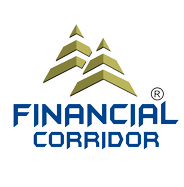CMT LEVEL 1 COURSE

Syllabus of CMT Level 1
- Theory and History
- Evolution of Technical Analysis
ii.Key Concepts in Technical Analysis and Market Analysis
iii. Behavioral Finance
- Classical Techniques
- Chart Types and Construction
ii.Trend Analysis
iii. Chart Pattern Analysis
- Internal and External Technical Indicators
v.Cycles
III. Advanced Techniques
- Statistical Analysis
ii.Volatility Analysis
iii. Systematic Trading
- Cross-asset Analysis
v.Principles of Risk Management
- Ethics
Section One: Theory and History of Technical Analysis
- A Brief History of Technical Analysis
- The Dow Theory
- Markets, Instruments, Data and the Technical Analyst
- The Opportunity of the Efficient Markets Hypothesis
- The Fibonacci Sequence and The Golden Ratio
Section Two: Charts: Market Price Data
- An Overview of Charting
- The X Axis
- The Y Axis
- Charting Volume and Open Interest
Section Three: Trend Analysis
- Trend Primer: What is a Trend
- Trend Primer: A Trend’s Four Phases
- Trend Primer: Trend Identification and Following
- Introduction to Volume Analysis
- Volume, Open Interest, and Price
- Market Internals
Section Four: Chart Pattern Analysis
- Classical Chart Patterns
- Introduction to Candlesticks
- Introduction to Candlestick Patterns
- Basics of Point-and-Figure Charting
Section Five: Technical Indicators
- Moving Averages
- Technical Indicator Construction
- Introduction to Bollinger Bands
Section Six: Statistics for Technicians
- Introduction to Statistics Part 1
- Introduction to Statistics Part 2
- Introduction to Probability
Section Seven: Behavioral Finance
- Behavioral Finance
Section Eight: Sentiment
- Market Sentiment and Technical Analysis
- Sentiment Measured from Market Data
- Sentiment Measured from External Data
Section Nine: Cycle Analysis
- Foundations of Cycle Theory
- Common Cycles
Section Ten: Comparative Market Analysis
- Equities
- Indexes
- Fixed Income/Bonds
- Futures
- Exchange – Traded Products (ETPs)
- Foreign Exchange (Currencies)
- Digital Assets
- Options
- Introduction to Relative Strength
- Relative Strength and its Uses
- Section Eleven: Volatility Analysis
- The Meaning of Volatility to a Technician
- Measuring Historical Volatility
- Options Derived Volatility
Section Twelve: Systems and Quantitative Methods
- Introduction to Quantitative Methods
FEE Structure:
Course – CMT Level 1
Duration – 4 Months
Course Fees – Rs – 40,000/-Only
